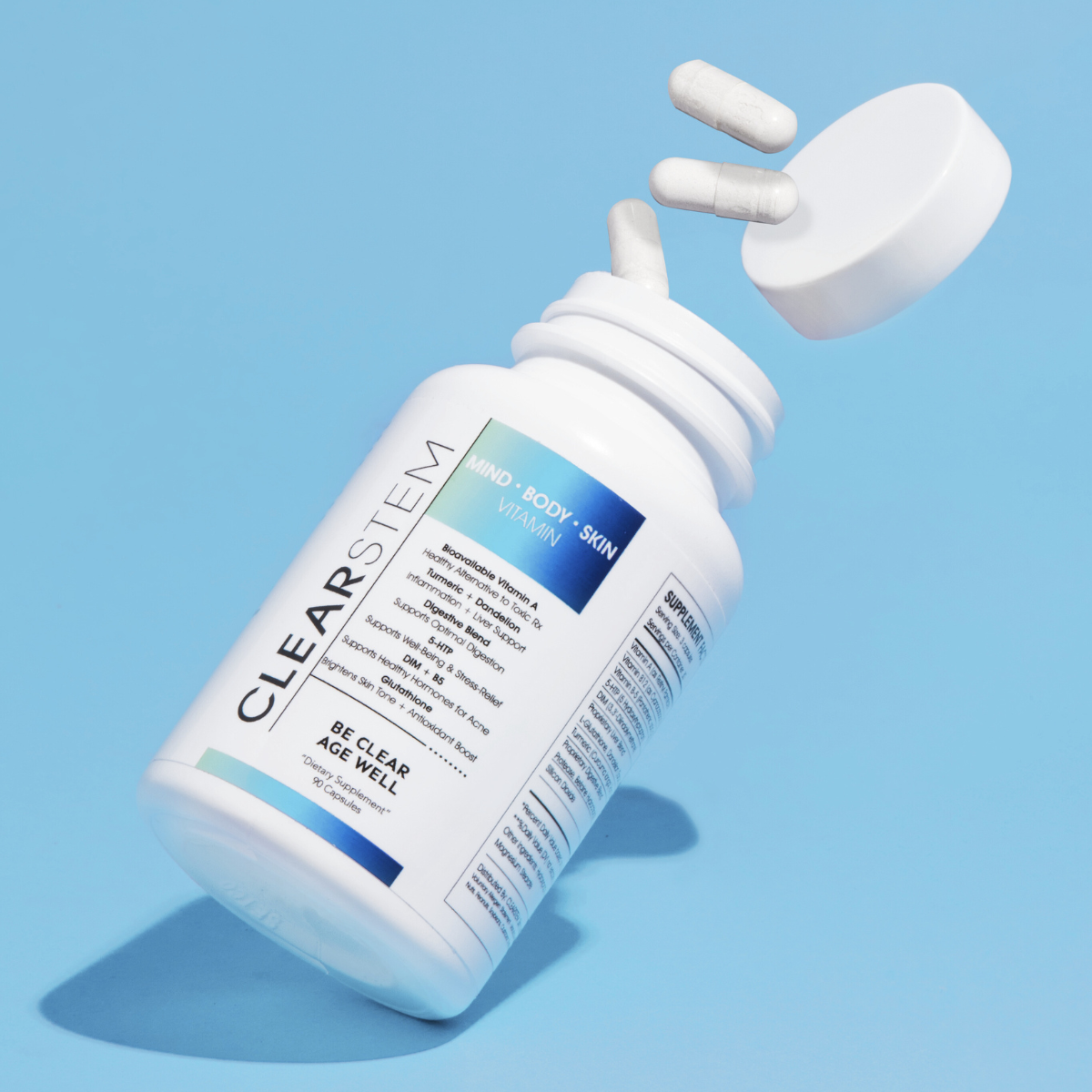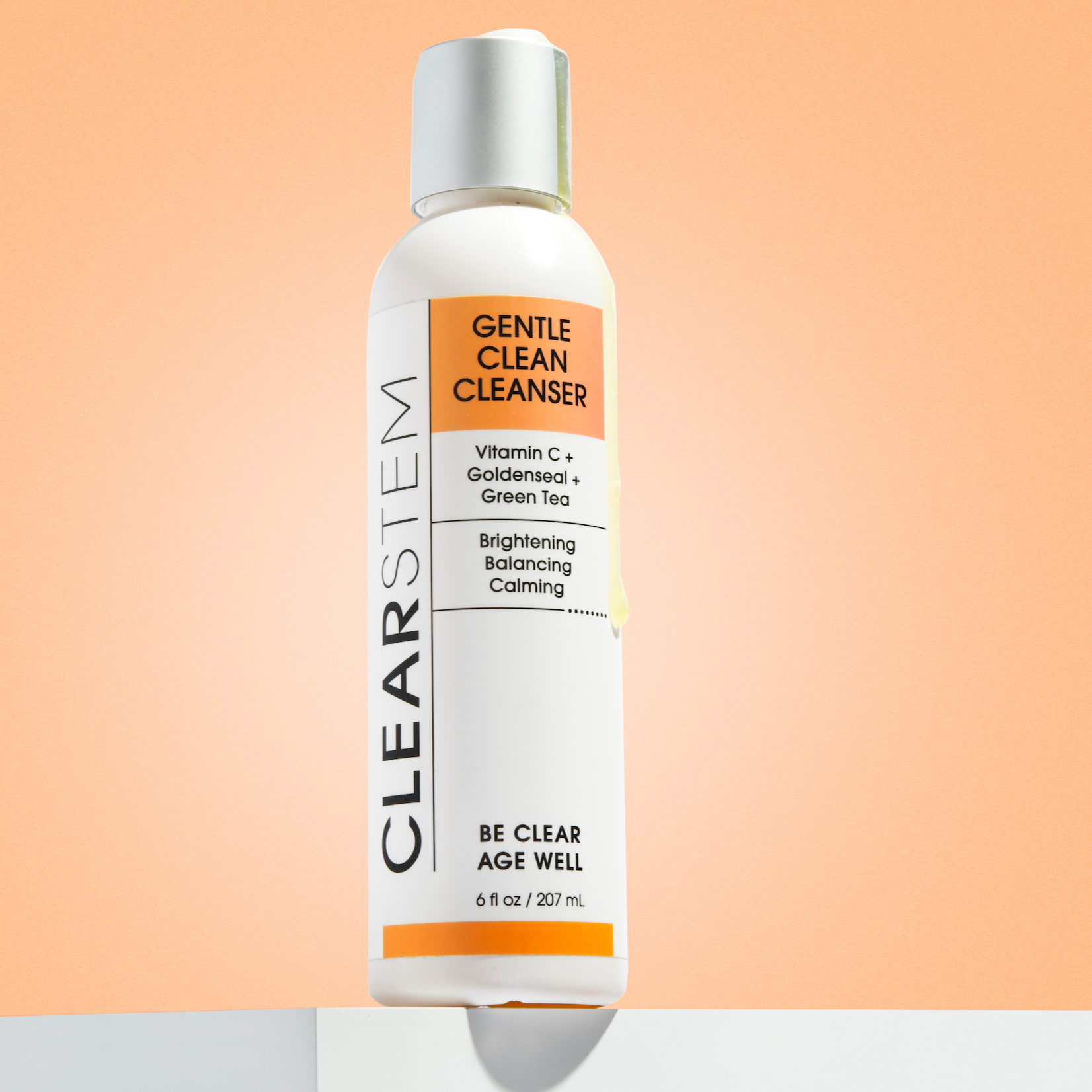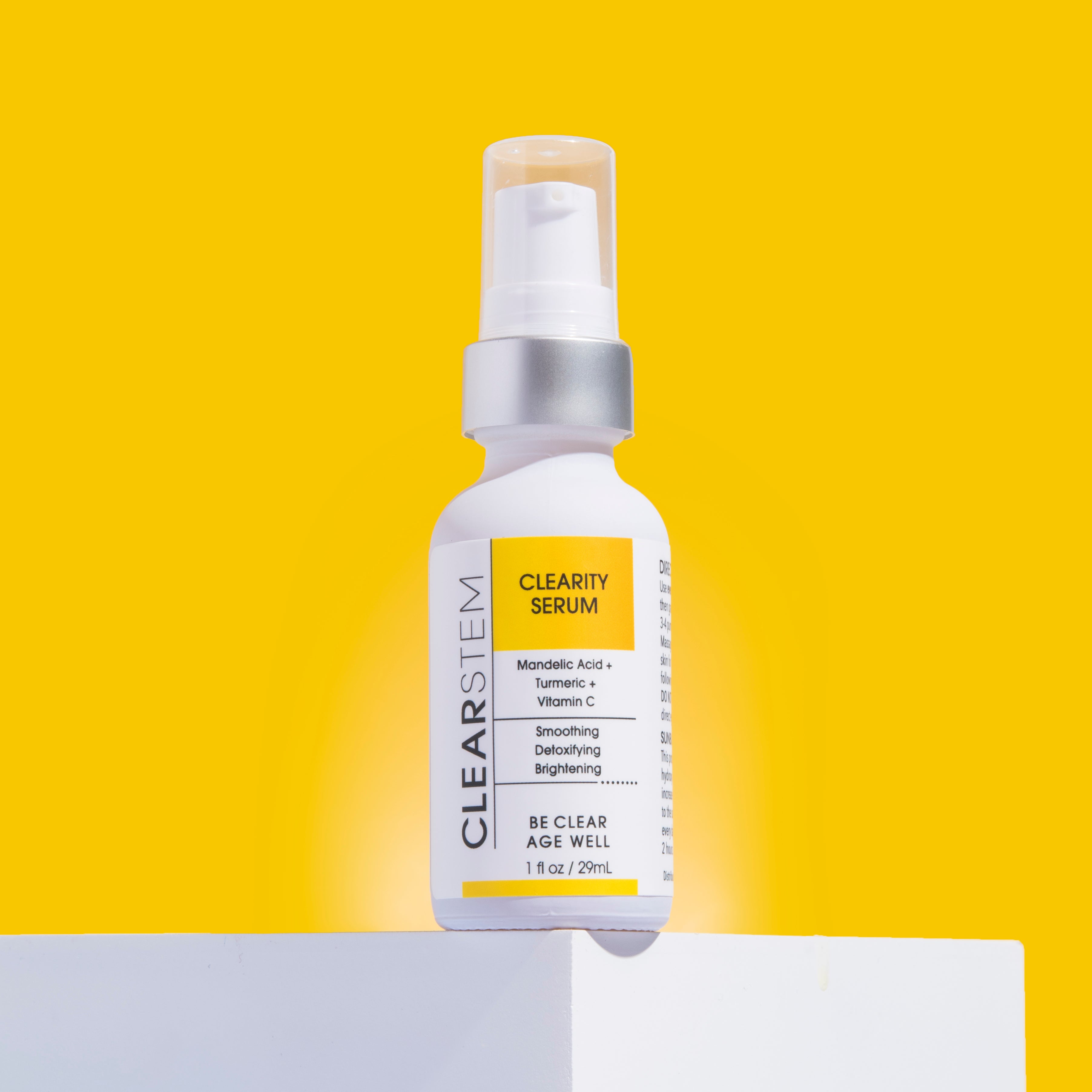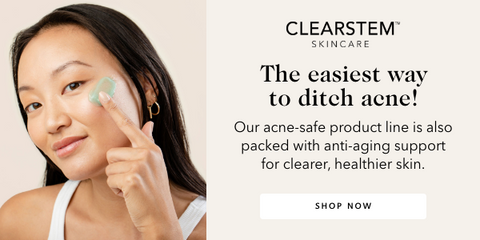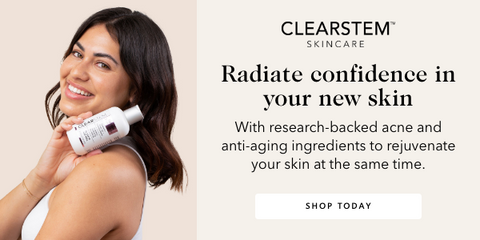Have you ever started a new acne regimen, only to look in the mirror and discover that your acne has actually gotten worse instead of better? This can be so incredibly frustrating, especially if you had your hopes pinned on that particular treatment being “the one” that cures your acne breakouts.
Fortunately, your acne getting worse after starting a new skincare routine is an extremely common thing. In fact, it’s actually a good thing, and seeing new breakouts after testing out a new skincare product can hint that you’re making progress on your clear skin journey.
Say what? Yep, friends, not only is this something that should be expected, but it actually suggests that you’re finally making good strides in getting rid of those blemishes for good. Called “acne purging" or "skin purging,” this is something that you definitely want to see, whether you believe it (or like it!) or not.
Today, we’re going to break down the skin purging process and explain what causes it to happen, as well as other potential acne triggers that might show up after starting a new skincare routine. Let’s go ahead and get started, shall we, friends?
What is Acne Purging?
So what is acne purging exactly? The word “purge” may have brought images into your head of these massive, rage-filled zits that launch a twenty-four-hour onslaught against your skin… and despite the Lovecraftian horror of this scenario, it’s actually not exactly entirely wrong.
You may be asking yourself “What does acne purging look like?” and might have even looked for pictures of it online. But before you let this raise your stress levels (because we all know stress can cause acne as well!), let’s go ahead and learn more about it first. (1)
To put it in the most simplest of terms, acne purging is a sign that you (and your skin) are on the right yellow brick road to the Emerald City of clear pores. Acne or skin purging is basically your skin telling you that the new skincare product you are trying is effective. However, it can also mean more pimples cropping up, more intense breakouts, and even spots in new areas on your face. (2)
While this may seem like a move in the opposite direction than where you want to go, acne purging is actually a great sign. Yes, acne purging may cause larger, more intense breakouts, complete with larger pimples and more inflammation, but keep in mind there’s a light at the end of the tunnel.
Why? Well, because it also usually means that something good is going on underneath the surface and you can count on clearer skin in the future. As long as you’re mentally strong enough to be able to ride it out – hang in there, friends! – then you can be confident that once it subsides, you’ll have that clear skin you always wanted waiting for you on the other side.
What Causes Acne Purging?
First off, let’s just go ahead and point out that it’s actually a good thing that you are here learning about acne purging, because we totally understand that having to deal with even more and bigger outbreaks can drive anyone batty. But when your skin is going through an acne purge, it’s because of the acne-fighting ingredients found in your acne treatment.
So, how is acne purging good for your skin? The answer lies in the cause of these breakouts. Acne products have skincare ingredients that are designed to boost cellular skin turnover and exfoliate all of that trapped sebum and bacteria out of your pores, speeding up a healing process that could otherwise take a while. (3)
During the skin cell turnover process, you are getting new layers of skin, while at the same time buildups of gunk underneath the surface are being pushed to the top. During a purge, this buildup of gunk (including dead skin cells, excess skin oils, and variable other substances in your body) rises up to the surface of your skin faster, putting the fast-forward on your future of breakouts all at once until your skin is cleared out. While the active ingredients that ignite the purging process may lead to some pimple problems in the beginning, these skin concerns are temporary and should subside within a month or two.
Sure, this means extra breakouts for now, but it also means that all that bacteria-laden goop in your inner layers of skin is being eliminated for the future. The immune response triggered by your body is telling it to send extra help to your skin now, possibly causing redness and even larger breakouts for the time being. (4)
Which Ingredients Cause Acne Purging?
Did you know that there are many common skincare ingredients that cause acne? It’s true! If you suspect skin purging is happening to you, check the ingredients of any acne products you’ve recently started using. Certain products make this cycle more likely to happen, and knowing them allows you to prepare. With that said, here are the most common ingredients that lead to acne purging.
- Alpha-hydroxy acids are very common in acne-fighting and anti-aging products. There are a ton of different kinds of alpha hydroxy acids (like citric acid and lactic acid) that may be present in your acne regimen. (5)
- Beta-hydroxy acids, on the other hand, can be produced by your body and can also cause a skin purging event. In the age-old AHA vs. BHA debate, we prefer AHAs, but BHAs can also be super beneficial in treating your acne breakouts.
- Benzoyl peroxide is another extremely common ingredient in the acne-fighting army. This medicine helps clear skin by encouraging new skin cell growth and turnover. Unfortunately, this also means that it can trigger skin purging. (6)
- Retinoids are also used to promote new skin cell growth and turnover. This is what makes it so useful for getting rid of dark spots and plumping out those fine lines we start to see as we get older (or because we just laugh too much). There are a lot of retinoids out there too, such as the surprising vitamin A, the expected retinol, and adapalene. (7)
- Vitamin C is commonly used for a variety of health benefits both in skincare and otherwise. Say hello to protection from sun damage and free radicals! But the skin benefits of vitamin C can also cause acne purges in the process. (8)
- Exfoliants from fruits or enzymes can mechanically bring about skin purges. Especially with sensitive skin, these skincare ingredients run a high risk of skin irritation while they work their magic. Knowing your skin’s type and trouble areas can help you avoid these issues in your clear skin journey.
Skin Purging and Accutane
Before moving on, we need to quickly talk about Accutane and the drug’s infamous skin purges. Accutane is an acne medicine frequently prescribed for severe acne cases, and is notorious for triggering one of the most intense purges. This potent medication can lead to a challenging initial breakout that can exacerbate your acne issues. If that wasn’t enough, the Accutane purge can last anywhere from a few weeks to a few months, causing further damage to your skin barrier.
Beneath the surface, persistent or severe purging may indicate suboptimal detox pathways in the body. If you find yourself facing prolonged purging, considering an acne lab test may provide insights into your overall health and how it impacts your acne.
If you are looking for a more gentle and safer alternative to Accutane, consider taking our daily hormonal acne supplement. This daily supplement highlights powerful ingredients like DIM, Vitamin A, 5-HTP, and more to detoxify the body from the inside out, while being gentle enough for everyday use. Unlike the harsh active ingredients found in Accutane that can wreak havoc on your skin, our hormonal acne supplement targets the root cause of acne and helps repair and nourish the skin barrier from within.
What's the Difference Between Purging vs. Breaking Out?
At this point, you might be thinking that acne purging and breakouts are the same things and you won’t be able to tell the difference or if acne purging is happening to you. Don’t worry, though. There are some solid ways to understand if you are having a reaction or if what you are experiencing is a skin purge related to an effective treatment plan.
Let’s clear one thing up (no pun intended) once and for all: pretty much types of acne and pimple problems are caused by bacteria and buildup in the pores of your skin. These particles can start under the surface, or can get into your pores during everyday skincare routines and activities. The first step to understanding if this is a reaction breakout or a skin purge is to look at your skincare battle plan.
If you have recently changed something about your skincare routine, especially if it is a topical acne medication as opposed to an internal treatment, pay attention to where the acne is breaking out on your skin. Are you seeing acne in the same places it’s been before, or is it moving to new stomping grounds? If the acne is in the same familiar places it has popped up before, then chances are you are having a skin purge.
Another sign that you are experiencing an acne purge and not a reactionary breakout include seeing acne in new places on your face. Blemishes may also take longer to go away than they did previously. If this sounds like you, then it’s more likely than not that you’re in the midst of an acne purge and not just a regular ol’ breakout.
What's the Difference Between Purging and an Allergic Reaction?
Of course, before starting any new skincare regimen, it’s super important to pay attention when using any products with new-to-you ingredients and beware of allergic reactions. Fortunately, it’s usually pretty easy to discern an allergic reaction to a skin purge.
Look first at speed, or rather, how quickly did this reaction happen? If you just started taking a new kind of acne medication or an ingredient you haven’t ingested before, an allergic reaction is likely to happen fairly quickly after ingesting a medicine or applying it to your skin. A skin purging event will take a longer stretch of time to show up in the mirror. (9)
Other things that indicate an allergic reaction are redness, bumps, swelling, and itching. Acne purging will be just like a normal, for you, acne breakout with a little extra punch. Pay attention to your body and you’ll know when something just isn’t right.
What to Do If Your Skin is Purging
If you suspect your skin is purging from a new medication added to your care plan, your first step might be to talk to your dermatologist about your current routine and if it may need to be changed to handle your purging skin. It’s possible that a certain medication may need to be slowed down just a touch to let your skin take a deep breath and chill out.
Your dermatologist may also prescribe a mandelic acid serum (or something similar) to encourage your skin in a slow, gentle manner. Another good idea is to take your time with the skincare treatment yourself – don’t majorly change anything you are doing or add any new products while you are going through a skin purge. It may be tempting to add more medication to get rid of those new breakouts, but it could hurt more than it helps.
Don’t be surprised if your skin is more sensitive to things like sunlight, especially after starting a new regimen. It would be a good idea to use an everyday mineral sunscreen for extra UV protection not only when starting a new acne treatment, but in general, too. The last thing you want to deal with is lingering post-inflammatory hyperpigmentation (PIH) due to the sun's ultraviolet rays actually making it worse. (10)
Your general environment may also cause irritation during an acne purge. Watch out for things that may aggravate your skin, like dust or smoke, to avoid making your skin feel worse. By being mindful of these possible triggers, you can help reduce the chances of an even worse acne purge.
How Long Does Acne Purging Last?
If you’re wondering how long acne purging lasts, keep in mind that acne purging is all about renewing and revitalizing your skin. A skin cell turnover cycle typically lasts between six to eight weeks, so this is also normally the amount of time it can take for an acne purge to die down. (11)
We know that no one is happy to hear the amount of time that skin purging can take, but on the other side can be a happy, carefree, clearer-skinned version of you. Just as long as you’re patient, you will be rewarded with the skin you’ve always wanted.
When to Stop Using a Product
While six to eight weeks is an average wait time when trying out a new product, if your acne purge lasts longer than this, then it may be time to talk to your dermatologist or look at changing your routine again. This is because there may be another issue causing your blemishes. It may be tempting to stick with a product for the long haul, but healing acne-prone skin isn’t a one-size-fits-all bag.
The bottom line here, friends? If you are concerned about any kind of reaction after starting a new product, talk to a dermatologist before continuing. Of course, there will always be instances where the use of a new product should be stopped immediately, like if you have a bad burning or itching sensation immediately after use.
The Takeaway
While an acne purge can be a somewhat anxiety-inducing thing for anyone who deals with clear skin issues, learning about what causes this to happen and how your skin’s lifecycle works can help tons with diffusing your stress level and letting you get to the next step of clear skin. Remember to keep communication open with your dermatologist!
But in the meantime, we hope that helping you understand this process has helped on your clear skin journey. The outcome will be worth the wait, so let your skin run through its natural cycles and be amazed at what it can do. Before you know it, you’ll be in the clear – and so will your skin!
Sources
Source 1: Understanding Acne https://newsinhealth.nih.gov/2010/01/understanding-acne
Source 2: Retinoid-Induced Flaring in Patients with Acne Vulgaris: Does It Really Exist? https://www.ncbi.nlm.nih.gov/pmc/articles/PMC2989803/
Source 3: Skincare Bootcamp: The Evolving Role of Skincare https://www.ncbi.nlm.nih.gov/pmc/articles/PMC5172479/
Source 4: Management of acne https://www.ncbi.nlm.nih.gov/pmc/articles/PMC3080563/
Source 5: Dual Effects of Alpha-Hydroxy Acids on the Skin https://www.ncbi.nlm.nih.gov/pmc/articles/PMC6017965/
Source 6: Benzoyl Peroxide - StatPearls https://www.ncbi.nlm.nih.gov/books/NBK537220/
Source 7: Tretinoin - StatPearls https://www.ncbi.nlm.nih.gov/books/NBK557478/
Source 8: Vitamin C in dermatology https://www.ncbi.nlm.nih.gov/pmc/articles/PMC3673383/
Source 9: Contact Dermatitis - StatPearls https://www.ncbi.nlm.nih.gov/books/NBK459230/
Source 10: Postinflammatory Hyperpigmentation - StatPearls https://www.ncbi.nlm.nih.gov/books/NBK559150/
Source 11: Making an epidermis https://www.ncbi.nlm.nih.gov/pmc/articles/PMC2861991/

